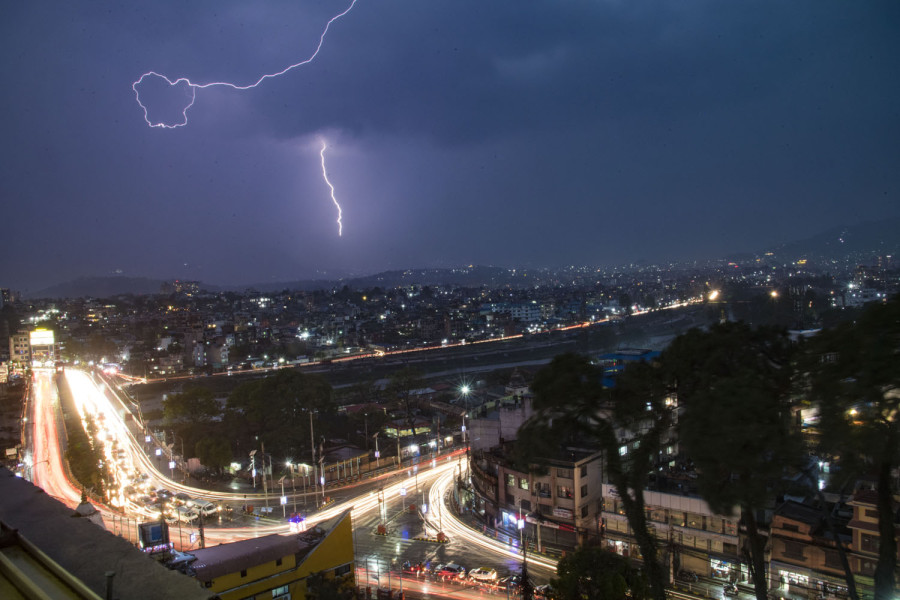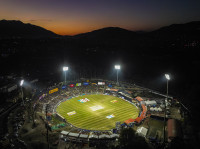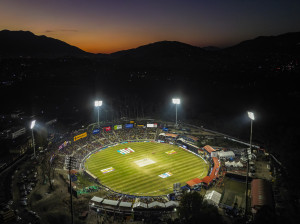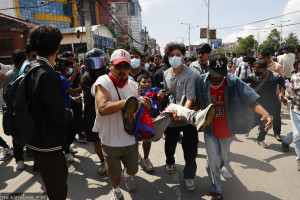Editorial
When lightning strikes
Technology and research is crucial to enabling an early warning system that can save lives.
Lightning kills more people than floods and landslides in Nepal, but lack of preparedness and precaution, disaster experts say, continues to kill and injure hundreds of people besides electrocuting livestock and incurring damage to property worth millions every year. According to meteorologists, thunderbolts are also turning deadlier every year with the increased intensity of storms. For such a major disaster that kills hundreds and despite readily available technology to provide real-time data on cloud movements and other atmospheric activities, lightning doesn’t receive the attention it should.
Between 1971 and 2019, some 1,927 people were killed, and 20,569 others were affected due to lightning strikes, according to a recent study which looked into lightning incidents, fatality rates and economic loss. The latest analysis revealed that the overall countrywide lightning fatality rate for the period was 1.77 per million per year. That’s two deaths in every million people attributed to lightning, with the fatality rates highest in Dolakha followed by Okhaldhunga, Ramechhap, Nuwakot and Makwanpur. Previously available data also shows that the Chure and Mahabharat hill ranges are highly vulnerable, and districts like Makwanpur, Rukum (West), Dang, Udayapur and Ilam are major hotspots that report the highest number of thunder strikes and fatalities.
Lightning incidents usually occur during the pre-monsoon period, and they do not draw the same attention as do floods and landslides with their scale of damage and mass casualties. However, if we crunch the numbers, we will find that lightning is the second deadliest catastrophe in the country after the Gorkha earthquakes, killing some 9,000 people. The latest data with the National Disaster Risk Reduction and Management Authority shows that at least 70 people and 717 head of cattle were killed in 247 lightning incidents last year, and property damage due to lightning is estimated at Rs7.2 million.
There are three things the government must immediately pursue parallelly to increase our level of preparedness and prevent tragedies and damage. There are only nine lightning detection network sensors at different airports of the country, and only one weather radar in Surkhet, which are not fully functional. Lightning detection stations and weather radars provide real-time data, which would be crucial to enabling an early warning system that can save lives. The government must not delay installing the two more weather radars as planned and must assess hotspot data to identify if more sensors are necessary. It must do this sooner and utilise the existing technology at the optimum level so that meteorologists can provide life-saving data to the public. Investment in research and technology will go a long way for the country as extreme weather events become the new normal.
Second, the Nepal National Building Code requires installing earthing systems or lightning protection devices in private and public buildings. Ward offices could strictly implement this provision if they make it mandatory before issuing a building permit and certificate of completion. Third, the government must communicate effectively to ensure that the public adheres to the building code and knows what to do when lightning strikes. Like the earthquake drill, the 30-30 rule of lightning, which recommends that one head indoors and stay put for the next 30 minutes after the last clap of thunder, can help save many lives.




 16.12°C Kathmandu
16.12°C Kathmandu














